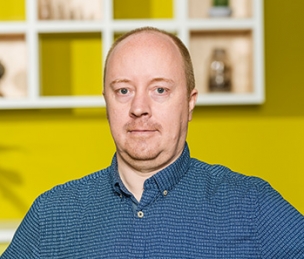Displaying 1 - 6 of 6
-
Van den Heuvel, H., Oostdijk, N., Rowland, C. F., & Trilsbeek, P. (2022). The CLARIN Knowledge Centre for Atypical Communication Expertise. In D. Fišer, & A. Witt (
Eds. ), CLARIN: The Infrastructure for Language Resources (pp. 373-388). Berlin, Boston: De Gruyter.Abstract
In this chapter we introduce the CLARIN Knowledge Centre for Atypical Communication Expertise. The mission of ACE is to support researchers engaged in languages which pose particular challenges for analysis; for this, we use the umbrella term “atypical communication”. This includes language use by second-language learners, people with language disorders or those suffering from lan-guage disabilities, and languages that pose unique challenges for analysis, such as sign languages and languages spoken in a multilingual context. The chapter presents details about the collaborations and outreach of the centre, the services offered, and a number of showcases for its activities. -
Drude, S., Trilsbeek, P., & Broeder, D. (2012). Language Documentation and Digital Humanities: The (DoBeS) Language Archive. In J. C. Meister (
Ed. ), Digital Humanities 2012 Conference Abstracts. University of Hamburg, Germany; July 16–22, 2012 (pp. 169-173).Abstract
Overview Since the early nineties, the on-going dramatic loss of the world’s linguistic diversity has gained attention, first by the linguists and increasingly also by the general public. As a response, the new field of language documentation emerged from around 2000 on, starting with the funding initiative ‘Dokumentation Bedrohter Sprachen’ (DoBeS, funded by the Volkswagen foundation, Germany), soon to be followed by others such as the ‘Endangered Languages Documentation Programme’ (ELDP, at SOAS, London), or, in the USA, ‘Electronic Meta-structure for Endangered Languages Documentation’ (EMELD, led by the LinguistList) and ‘Documenting Endangered Languages’ (DEL, by the NSF). From its very beginning, the new field focused on digital technologies not only for recording in audio and video, but also for annotation, lexical databases, corpus building and archiving, among others. This development not just coincides but is intrinsically interconnected with the increasing focus on digital data, technology and methods in all sciences, in particular in the humanities. -
Drude, S., Broeder, D., Trilsbeek, P., & Wittenburg, P. (2012). The Language Archive: A new hub for language resources. In N. Calzolari (
Ed. ), Proceedings of LREC 2012: 8th International Conference on Language Resources and Evaluation (pp. 3264-3267). European Language Resources Association (ELRA).Abstract
This contribution presents “The Language Archive” (TLA), a new unit at the MPI for Psycholinguistics, discussing the current developments in management of scientific data, considering the need for new data research infrastructures. Although several initiatives worldwide in the realm of language resources aim at the integration, preservation and mobilization of research data, the state of such scientific data is still often problematic. Data are often not well organized and archived and not described by metadata ― even unique data such as field-work observational data on endangered languages is still mostly on perishable carriers. New data centres are needed that provide trusted, quality-reviewed, persistent services and suitable tools and that take legal and ethical issues seriously. The CLARIN initiative has established criteria for suitable centres. TLA is in a good position to be one of such centres. It is based on three essential pillars: (1) A data archive; (2) management, access and annotation tools; (3) archiving and software expertise for collaborative projects. The archive hosts mostly observational data on small languages worldwide and language acquisition data, but also data resulting from experiments -
Seifart, F., Haig, G., Himmelmann, N. P., Jung, D., Margetts, A., & Trilsbeek, P. (
Eds. ). (2012). Potentials of language documentation: Methods, analyses, and utilization. Honolulu: University of Hawai‘i Press.Abstract
In the past 10 or so years, intensive documentation activities, i.e. compilations of large, multimedia corpora of spoken endangered languages have contributed to the documentation of important linguistic and cultural aspects of dozens of languages. As laid out in Himmelmann (1998), language documentations include as their central components a collection of spoken texts from a variety of genres, recorded on video and/or audio, with time-aligned annotations consisting of transcription, translation, and also, for some data, morphological segmentation and glossing. Text collections are often complemented by elicited data, e.g. word lists, and structural descriptions such as a grammar sketch. All data are provided with metadata which serve as cataloguing devices for their accessibility in online archives. These newly available language documentation data have enormous potential. -
Wittenburg, P., & Trilsbeek, P. (2010). Digital archiving - a necessity in documentary linguistics. In G. Senft (
Ed. ), Endangered Austronesian and Australian Aboriginal languages: Essays on language documentation, archiving and revitalization (pp. 111-136). Canberra: Pacific Linguistics. -
Wittenburg, P., Trilsbeek, P., & Lenkiewicz, P. (2010). Large multimedia archive for world languages. In SSCS'10 - Proceedings of the 2010 ACM Workshop on Searching Spontaneous Conversational Speech, Co-located with ACM Multimedia 2010 (pp. 53-56). New York: Association for Computing Machinery, Inc. (ACM). doi:10.1145/1878101.1878113.
Abstract
In this paper, we describe the core pillars of a large archive oflanguage material recorded worldwide partly about languages that are highly endangered. The bases for the documentation of these languages are audio/video recordings which are then annotated at several linguistic layers. The digital age completely changed the requirements of long-term preservation and it is discussed how the archive met these new challenges. An extensive solution for data replication has been worked out to guarantee bit-stream preservation. Due to an immediate conversion of the incoming data to standards -based formats and checks at upload time lifecycle management of all 50 Terabyte of data is widely simplified. A suitable metadata framework not only allowing users to describe and discover resources, but also allowing them to organize their resources is enabling the management of this amount of resources very efficiently. Finally, it is the Language Archiving Technology software suite which allows users to create, manipulate, access and enrich all archived resources given that they have access permissions.

Share this page